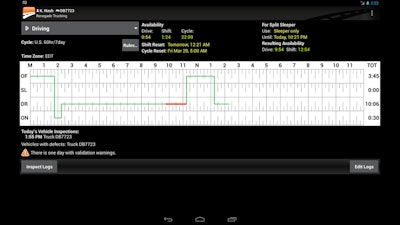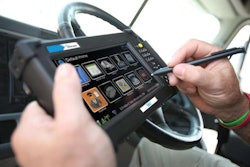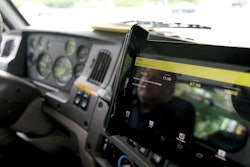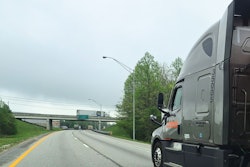
The comment period ended June 26.
OOIDA penned a nearly 50-page comment outlining its opposition the rule, saying there are no devices capable of performing as the Federal Motor Carrier Safety Administration described in its proposal, nor did the agency take enough steps to prevent harassment and coercion of drivers by carriers or others in the industry.
OOIDA says electronic logging devices, contrary to what FMCSA has proposed in its rule, still rely on drivers to input manually changes of duty status, therefore not increasing hours of service compliance as intended, the group says.
“While it is true that ELDs can measure an individual’s driving time, those devices cannot determine compliance with the HOS rules any better than paper logbooks. Nor can they determine whether a driver has had an opportunity to obtain restorative sleep in order to eliminate fatigue,” OOIDA writes.

OOIDA also says the agency’s attempts in the rule to prevent driver harassment and coercion, which derailed the last EOBR mandate in court, again come up short. (Click here to read Overdrive‘s coverage of the rule’s harassment prevention measures.)
Per OOIDA’s comment: “FMCSA’s proposal on harassment is not carefully conceived and provides no effective tools to ensure against harassment. OOIDA is incredulous that FMCSA has put off for another day specific regulations dealing with coercion. The concepts of harassment and coercion are closely intertwined. The pressure put on motor carriers by shippers and receivers to follow unrealistic delivery schedules favors addressing the problems of harassment and coercion comprehensively in a single proceeding.”
Lastly, OOIDA says the rule restricts Constitutional rights to movement “without honoring the individual’s due process rights.” Monitoring drivers movement and location with electronic devices without having first court proceedings OK’ing such tracking violates Constitutional protection, the group argues.
“The proposed rule’s imposition of electronic monitoring is an unconstitutional deprivation of a driver’s freedom of movement. If adopted, the proposed rule would afford truck drivers fewer constitutional protections than the courts currently afford accused sex-offenders under federal law.”
ATA says it is supportive of the rule and disagrees with OOIDA’s note about correlations between ELD use and hours-of-service compliance, saying data shows drivers who use ELDs have better hours compliance.
ATA wants a longer grandfather period for carriers who have already switched to older forms of electronic logging devices (like EOBRs) and that it wants the devices to better track vehicle location. Carriers should also be able to make edits to driver logs without driver approval, the group wrote.
And the requirement for drivers and carriers to keep up to 10 supporting documents for each day the driver is on duty are “excessive and unnecessary,” ATA said in its comment, noting ELDs “all but eliminate” the need for carriers to keep any documents to back up logs.
The Trucking Alliance — a coalition of carriers and other industry stakeholders — said in its comment the ELD mandate will be the “most significant change since deregulation,” adding it will reduce compliance violations for carriers and help boost Compliance, Safety, Accountability rankings.
Drivers too will have freer schedules, as ELDs “remove the tedious burden of filling out paper logbooks.”
There’s no set timeline for when the agency will produce a final ELD mandate rule, but it could be several months, if not longer. Congress could attempt to include language in a transportation bill to set a deadline, however, as the Senate recently did in its DOT-funding bill, which would set a Jan. 30, 2015 deadline for the final rule.
The effective date of the mandate would be two years after the publication of the final rule, so likely late 2016 or early 2017.













